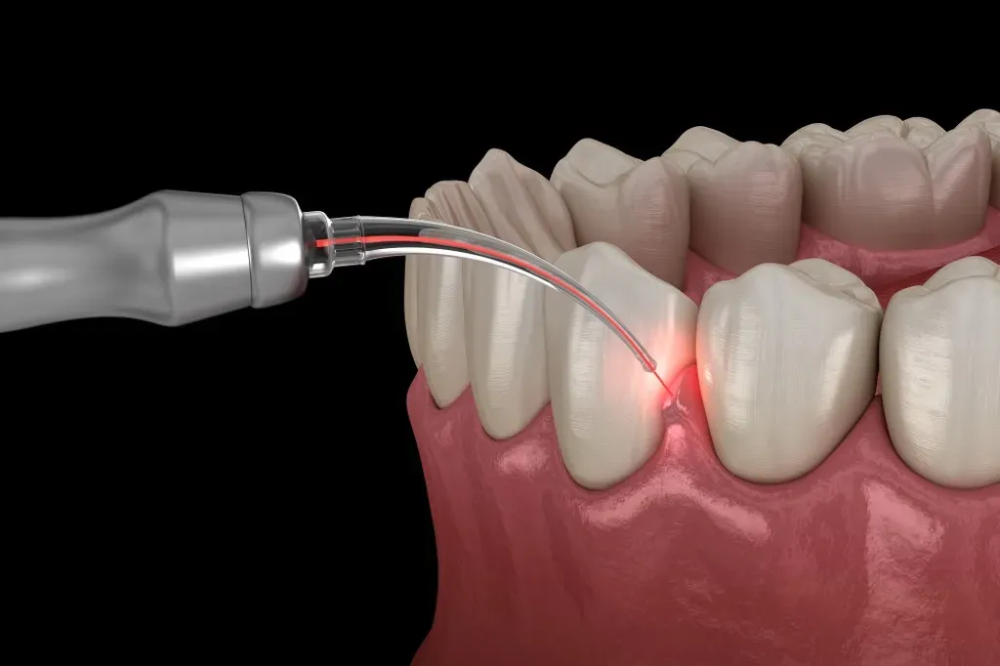
Gum surgery, also known as periodontal surgery, is performed to treat gum disease, improve gum aesthetics, or prepare/support dental restorations. It’s often necessary when nonsurgical treatments (like deep cleanings) aren’t enough to restore gum health or appearance.
Why Is Gum Surgery Needed?
Gum surgery may be recommended for:
- Advanced gum disease (periodontitis)
- Receding gums
- Excessive or uneven gum tissue (gummy smile)
- Pocket reduction to clean deep infected areas
- Bone regeneration around teeth
- Improving the fit of crowns or bridges
🔍 Types of Gum Surgeries
1. Flap Surgery (Pocket Reduction Surgery)
- Gums are lifted to remove tartar and bacteria from deep pockets
- The gum is then sutured back snugly around the tooth
2. Gingivectomy
- Removes excess gum tissue (e.g., to correct a gummy smile or deep pockets)
- Often done with a laser for precision and quick healing
3. Gingivoplasty
- Reshapes healthy gum tissue for a more natural appearance
- Often combined with gingivectomy
4. Soft Tissue Graft (Gum Grafting)
- Treats gum recession by grafting tissue from the palate or donor source
- Covers exposed roots, reduces sensitivity, and prevents further recession
5. Bone Grafting / Guided Tissue Regeneration
- Rebuilds bone lost to severe gum disease
- Often used to support loose teeth or prepare for implants
6. Crown Lengthening
- Removes gum and bone tissue to expose more of the tooth
- Helps with restorative work (e.g., placing crowns) or aesthetic improvements
⏱️ Procedure and Recovery
- Local anesthesia is used (sometimes sedation)
- Most procedures take 1–2 hours
- Initial healing: 1–2 weeks
- Full healing: 4–8 weeks, depending on procedure type
✅ Benefits
- Stops progression of gum disease
- Reduces risk of tooth loss
- Improves aesthetics and smile line
- Prepares mouth for crowns, bridges, or implants

